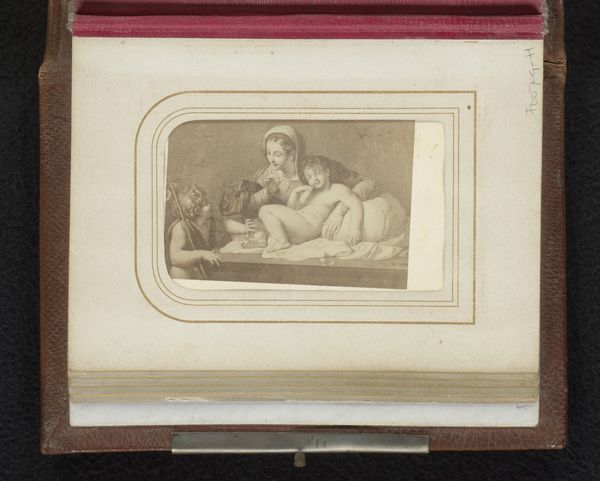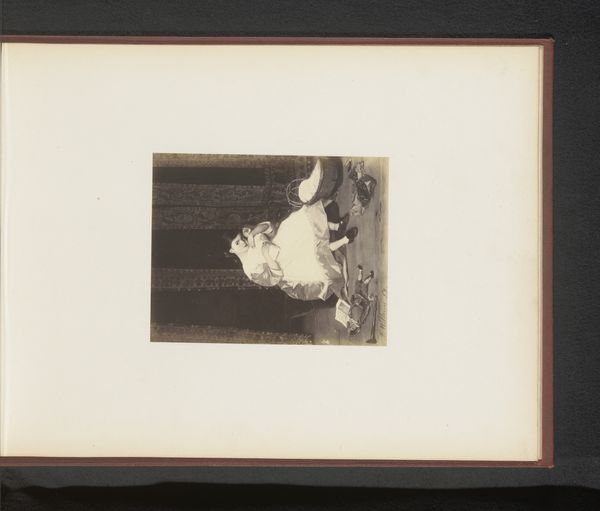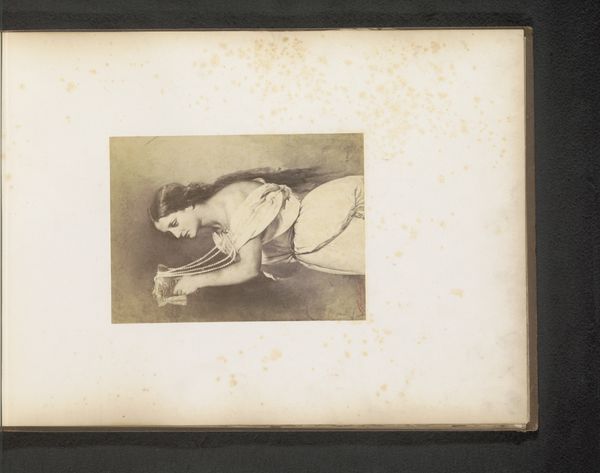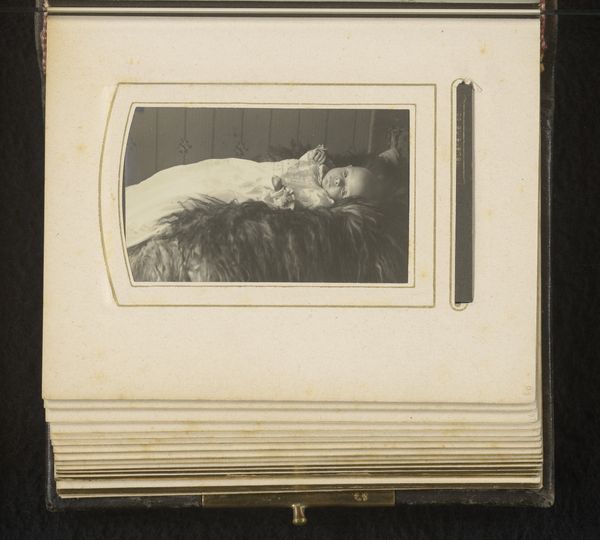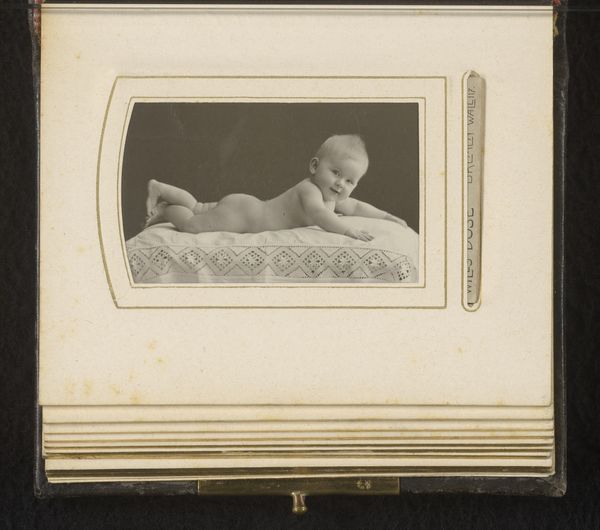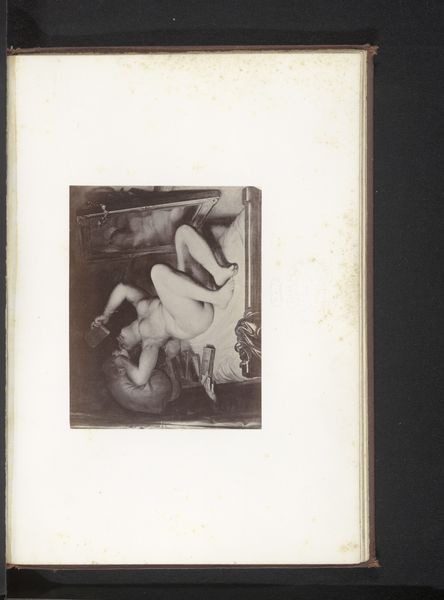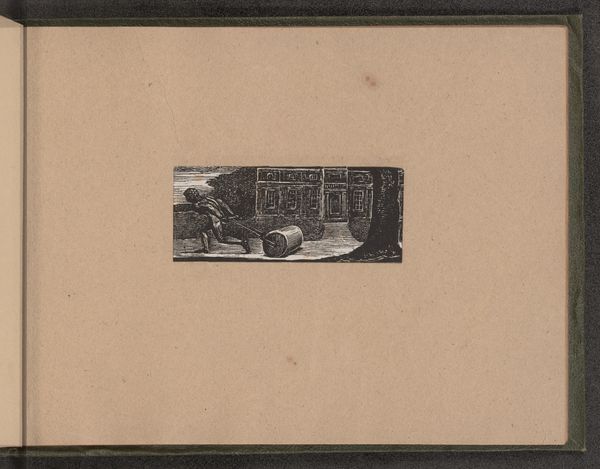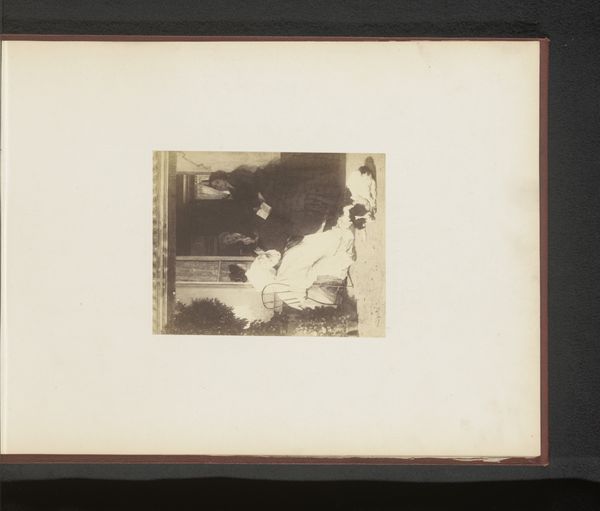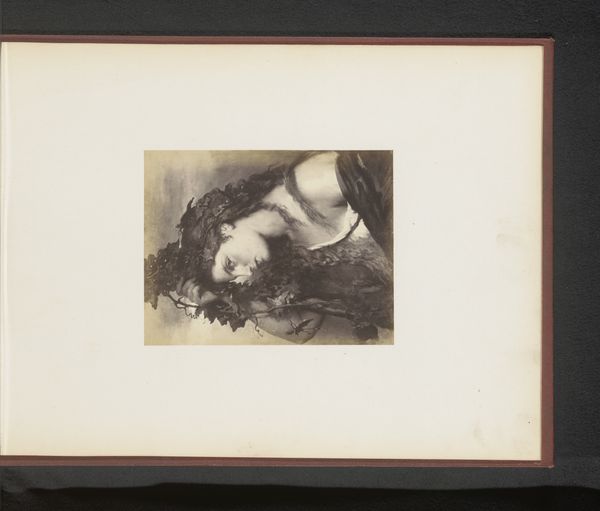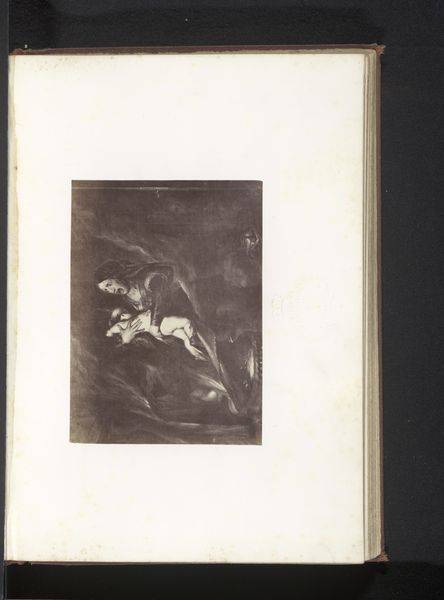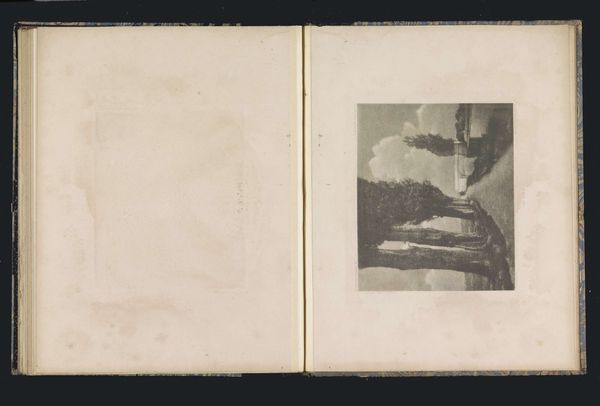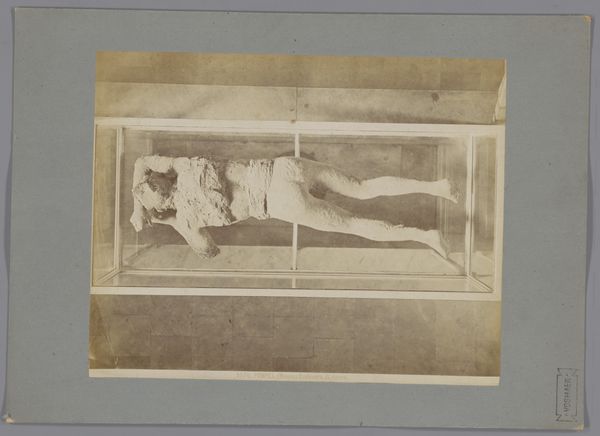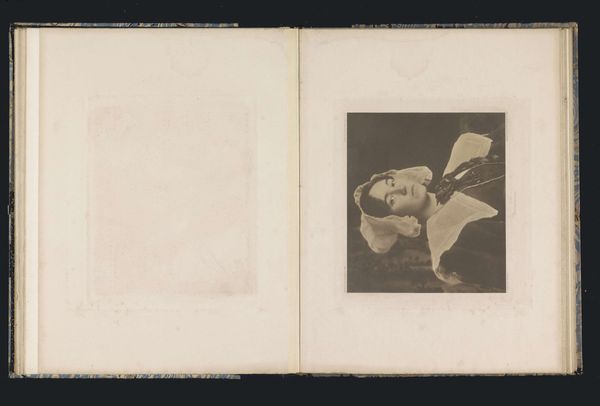
Fotoreproductie van een prent met Christus als kind, slapend op een kruis door Francesco Albani 1865 - 1900
0:00
0:00
print, photography, gelatin-silver-print
# print
#
landscape
#
figuration
#
photography
#
gelatin-silver-print
Dimensions: height 86 mm, width 53 mm
Copyright: Rijks Museum: Open Domain
Curator: There’s something unsettling, almost eerie, about this piece. The dreamlike quality hangs so heavily. Editor: Well, let's set the stage a bit. We're looking at a gelatin silver print, a photo reproduction dating from about 1865 to 1900. It replicates an earlier image – a print after Francesco Albani's depiction of the Christ child asleep on the cross. It really highlights the complex dance of production, copying, and circulation in the art world. Curator: I see what you mean, but all I can see at first glance is just how incredibly fragile it looks. That small child sleeping so innocently on, well, an instrument of death! It is very disturbing, as if his destiny is predetermined... And the soft, faded landscape is like the backdrop for a fable, an old, dark fairytale. Editor: It's interesting you bring up fragility, because it extends to the very material of the print itself, wouldn't you agree? The gelatin silver process was pretty commonplace, mass-produced; this isn't some rare, hand-painted masterpiece, it’s more like visual merchandise that puts the suffering of Jesus, his labour as a figure for others, at center stage. Curator: So true! But to focus solely on that misses something crucial. Notice the child's serenity as if untouched by any worry or any sin? He's oblivious and that blindness lends a peculiar sweetness to the somber premonition. What about Albani's take? Is it an attempt to reconcile purity with suffering? To find the "holy" in mundane photographic methods? Editor: Perhaps. What strikes me is how the artistic skill that crafts images of devotion often relies on networks of workshops, cheap labour and commercial strategies of selling copies that ultimately makes them precious relics of our collective need for visual symbols. So while the landscape behind hints at transcendence, it also implies commerce that ultimately transforms what’s being circulated. Curator: Indeed. Though even aware of that, even *because* of that, the paradox remains powerful, like gazing at a shadow cast by faith and technology hand-in-hand! So unsettling. Editor: I agree. Its unsettling impact reveals a deeper examination on materials, artistry and meaning within these objects. And it is a useful reminder that every print comes from materials extracted somewhere, assembled by someone.
Comments
No comments
Be the first to comment and join the conversation on the ultimate creative platform.
